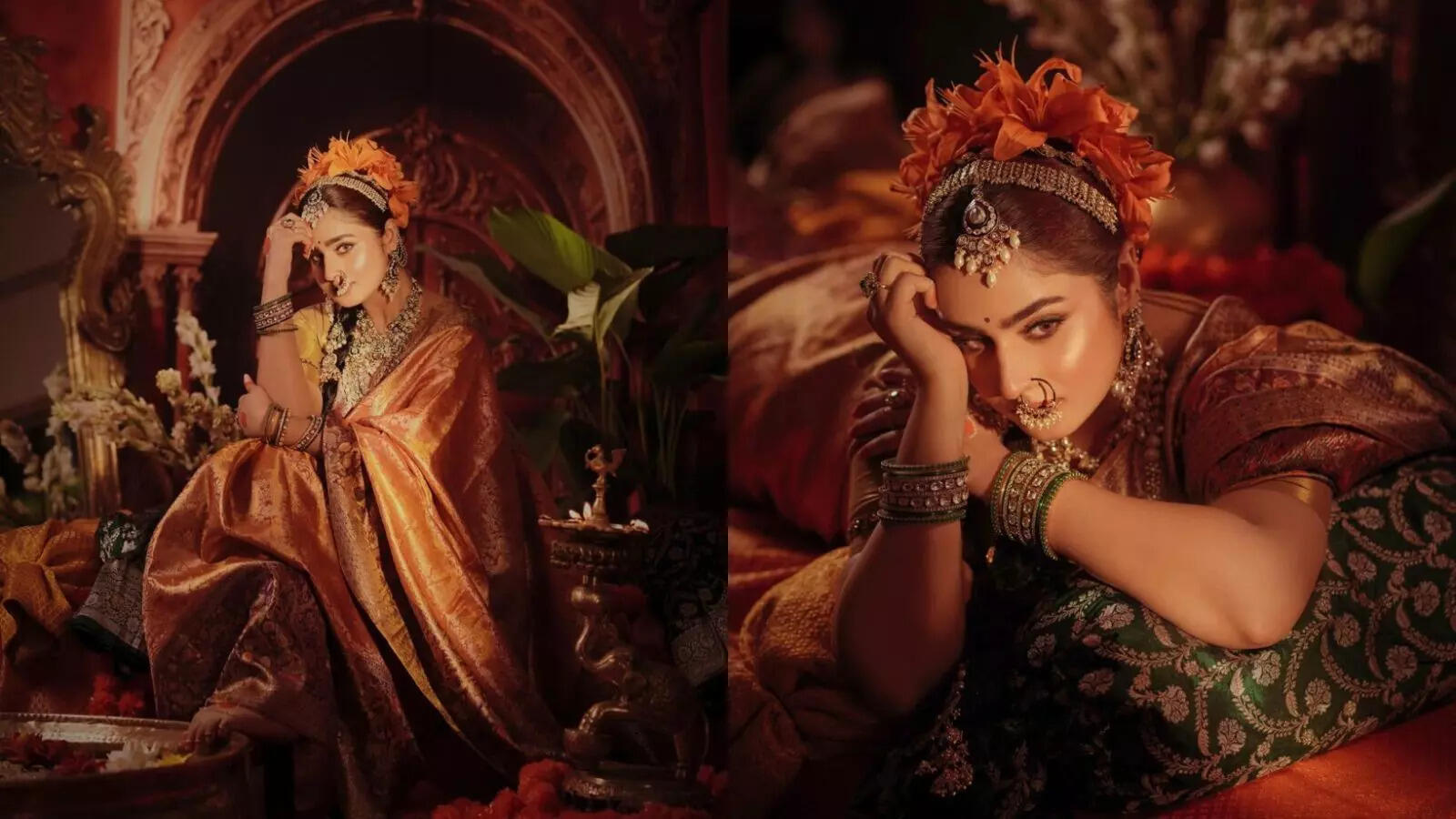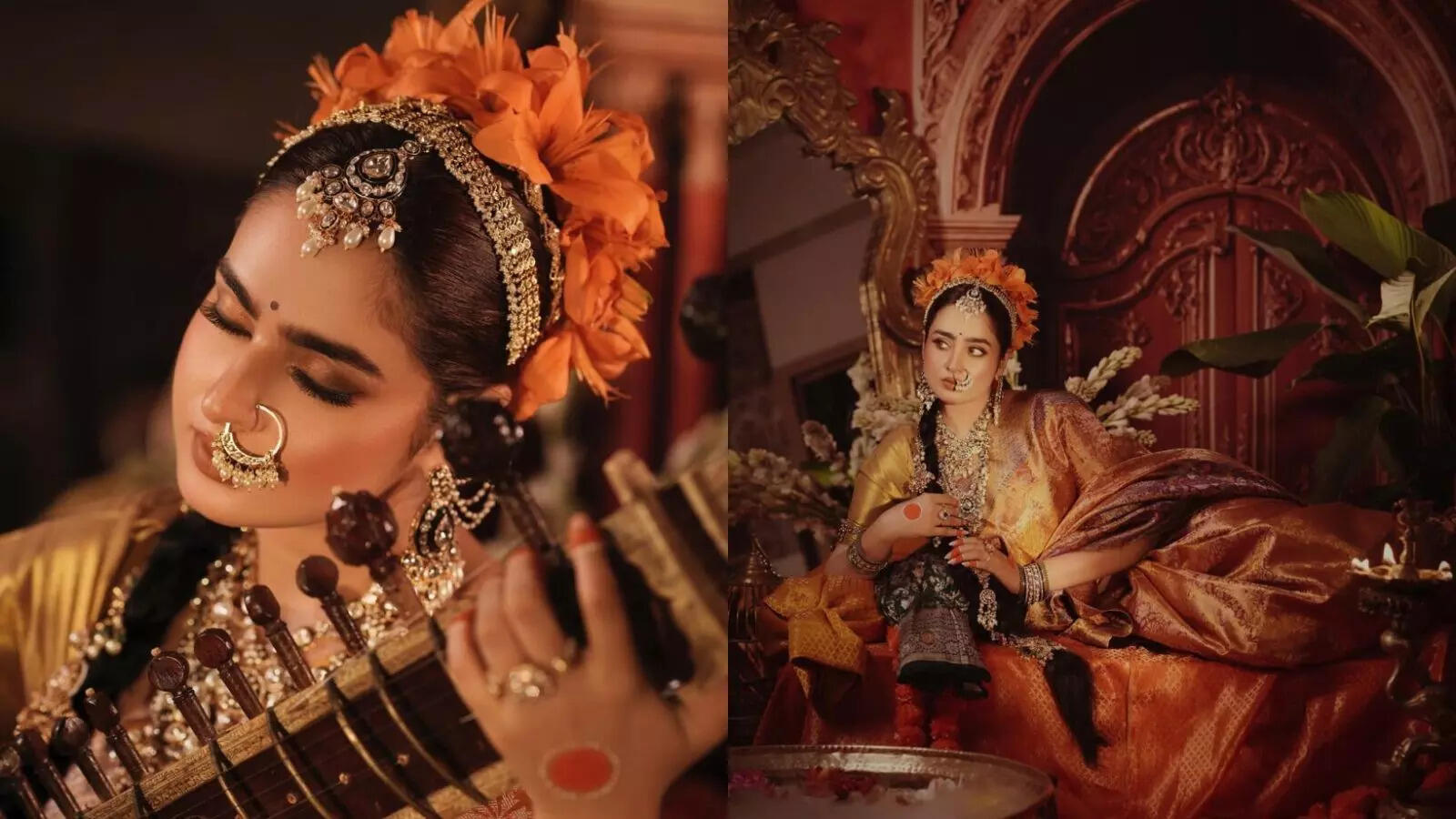Ayesha Khan Stuns in Traditional Saree Look, Blending Heritage and Art

Ayesha Khan sat with the serenity of an idol, every fold of her saree carrying the quiet strength of memory and craft. Born in Maharashtra and now carving her path across Telugu cinema and Hindi television, she unveiled a portrait that looked less like fashion and more like a living piece of heritage.
Her silk saree, in shades of molten gold and rust, wrapped around her like warm firelight. The zari border glowed as if lit from within, giving the impression that the fabric itself was alive with tradition. It wasn’t just clothing it was a tapestry of culture, woven with artistry and patience.

Jewellery added another layer to the aura she created. A nath rested gracefully on her face, chokers stacked elegantly on her neck, and bangles traced soft rhythms around her wrists. Marigold-bright flowers crowned her long braid, while gemstones and pearls in her headpiece caught the evening glow.
Holding a sitar, she looked as though she had stepped out of a centuries-old mural where music, colour, and ornament seamlessly merged into one timeless frame.
But beyond this still image, Ayesha’s journey continues to expand. On the big screen, she has appeared in Gangs of Godavari, Manamey, and Jaat. On television, she now brings depth to the character of Nikki in the serial Dil Ko Rafu Kar Lei. Each project marks a new chapter, adding to her growing repertoire and presence in both cinema and television.

With this portrait, Ayesha Khan reminds us that fashion is not just about appearances it is memory, history, and performance woven into one.
Her silk saree, in shades of molten gold and rust, wrapped around her like warm firelight. The zari border glowed as if lit from within, giving the impression that the fabric itself was alive with tradition. It wasn’t just clothing it was a tapestry of culture, woven with artistry and patience.

Jewellery added another layer to the aura she created. A nath rested gracefully on her face, chokers stacked elegantly on her neck, and bangles traced soft rhythms around her wrists. Marigold-bright flowers crowned her long braid, while gemstones and pearls in her headpiece caught the evening glow.
You may also like
- 'Not really pro-life': Pope Leo opens up on US abortion debate; calls Trump's immigration policies against Church teachings
- Liverpool could pocket millions from Man City's 115 charges legal battle with the Premier League
- US should deepen defence ties with India to counter China, says expert
- Why players' names will be removed from shirts during England v Wales friendly
- Indian Navy demonstrates global submarine rescue capability at Exercise Pacific Reach
Holding a sitar, she looked as though she had stepped out of a centuries-old mural where music, colour, and ornament seamlessly merged into one timeless frame.
But beyond this still image, Ayesha’s journey continues to expand. On the big screen, she has appeared in Gangs of Godavari, Manamey, and Jaat. On television, she now brings depth to the character of Nikki in the serial Dil Ko Rafu Kar Lei. Each project marks a new chapter, adding to her growing repertoire and presence in both cinema and television.

With this portrait, Ayesha Khan reminds us that fashion is not just about appearances it is memory, history, and performance woven into one.









